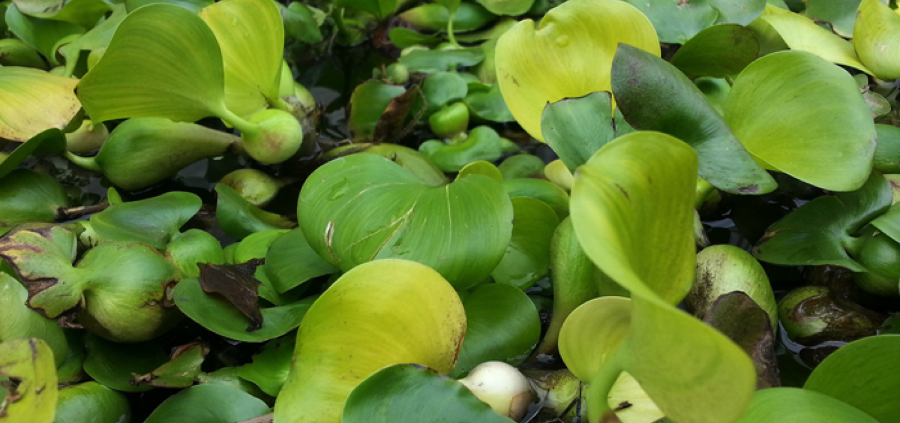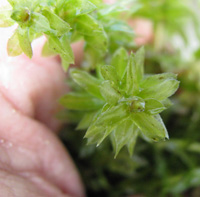
Water Hyacinth
Do not release this highly invasive aquatic plant
When clearing out the foliage from an aquarium or backyard water garden this fall, keep water hyacinth and other invasive plants, such as the popular water lettuce and hydrilla, out of streams, rivers, and other waterways.
Water hyacinth has been described as “the world’s worst aquatic weed” —lovely in the garden, but a nuisance in the river, according to Andy Casper, director of the Illinois River Biological Station of the Illinois Natural History Survey (INHS), Prairie Research Institute, University of Illinois. At this time of year, the plant can be spread easily.
“Water hyacinth is the aquatic version of kudzu,” Casper said. “It grows faster than any other plant competing with it, quickly taking over a pond or river-bed.”
As the plant spreads out over a water surface, it blocks the sun, so native plants can’t survive. Fish that once hid amongst the underwater plants to hunt for their prey and young fish that hide from predators experience a changed habitat. Additionally, in the fall as the water hyacinth dies, it sinks to the river bottom, decomposing and taking the oxygen out of the water in the process. Too little oxygen can lead to large fish kills in the winter when oxygen is naturally in short supply.
Water hyacinth is an economically important plant for the water gardening industry. For this reason, the sale of water hyacinth has not yet been prohibited by the State of Illinois, as the debate continues on whether it survives a cold winter, according to Pat Charlebois, INHS aquatic ecologist. Many states, and the City of Chicago have prohibited the sale of this plant.
Water hyacinth is just one of many invasive aquatic plants that should not be discarded in waterways. Hydrilla, a formerly common aquarium plant, is another plant that carries a financial toll when it spreads uncontrolled. Plants such as these clog waterways, impeding boat navigation. With government cleanup, millions of dollars may be spent, and recreational areas may be closed, reducing recreation-based incomes.

“Hydrilla is such an aggressive plant and spreads so quickly that it can take years to completely remove it in lakes and rivers,” Charlebois said. “Because of this, the State of Illinois has an early detection and rapid response plan in place in case hydrilla shows up in an area.”
Deliberately dumping water hyacinth plants in the waterways will cause the plant to spread, as well as composting plants too close to a river, stream, or drainage ditch. Backyard flooding can also cause the invasive plant to spread into nearby surface water areas. In one case in which plants spread, an individual composted water hyacinth plants on a pile at the edge of a yard located close to the river. The result was a big pile of water hyacinth down river, Casper said. “All it takes is one good growing season, and the plants take over,” he said.
In a survey of the entire Illinois River from Hennepin, IL to Joliet, IL by airplane and boat, INHS staff discovered 15 individual water hyacinth beds in the river. In addition, fish surveys also showed that whole water hyacinth seeds were present in the digestive tracts of carp, indicating a threat of dispersal of the seeds to other areas. Seeds were present in 27 percent of the digestive tracts of the common carp examined, regardless of their proximity to water hyacinth beds.
Properly Disposing of Water Plants
For proper disposal of water hyacinth or other pond plants, place plants in a plastic garbage bag and throw them away. Keep all plant parts away from waterbodies because the seeds are tiny and can be missed by the naked eye. Do not compost plants close to any river, stream or drainage ditch.
Consumers can find a list of Illinois’ invasive plants here. The State of Illinois regulates some plants, but others, which are not regulated, can be just as much of a nuisance.
More information about aquatic invaders in the market place (AIM) can be found at TakeAIM.org. Alternatives to the release of aquatics in trade can be found at ReleaseZero.org.
This news release courtesy of Illinois Natural History Survey. A link to the press release can be found here.
Another interesting article about how water hyacinth is affecting Illinois waterways can be found here.



